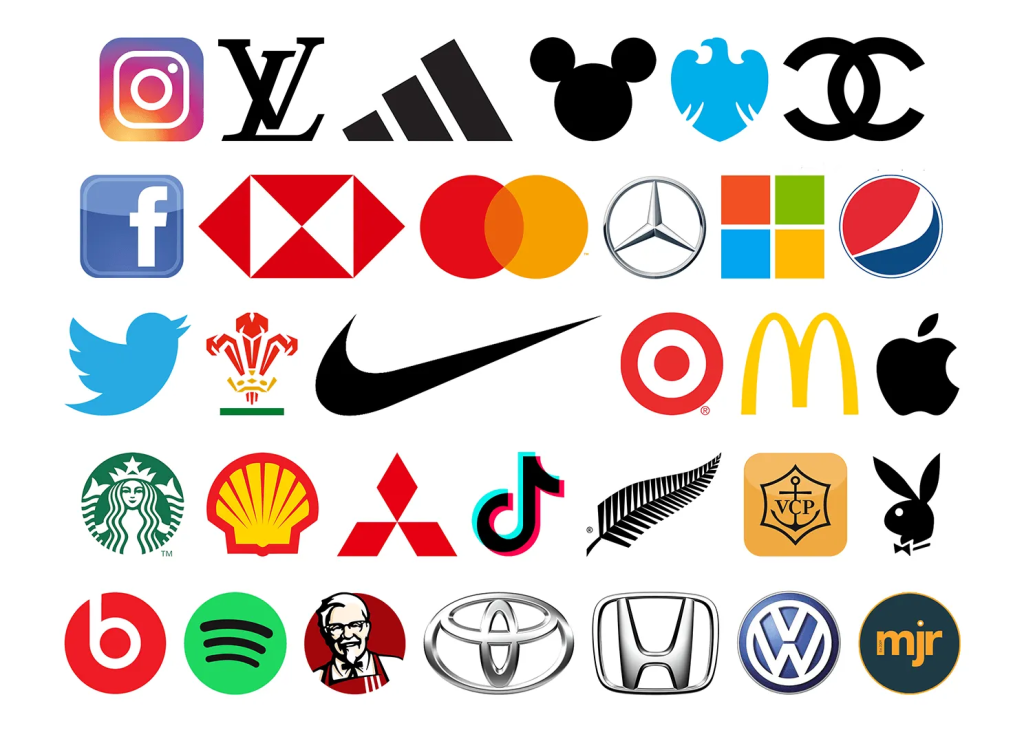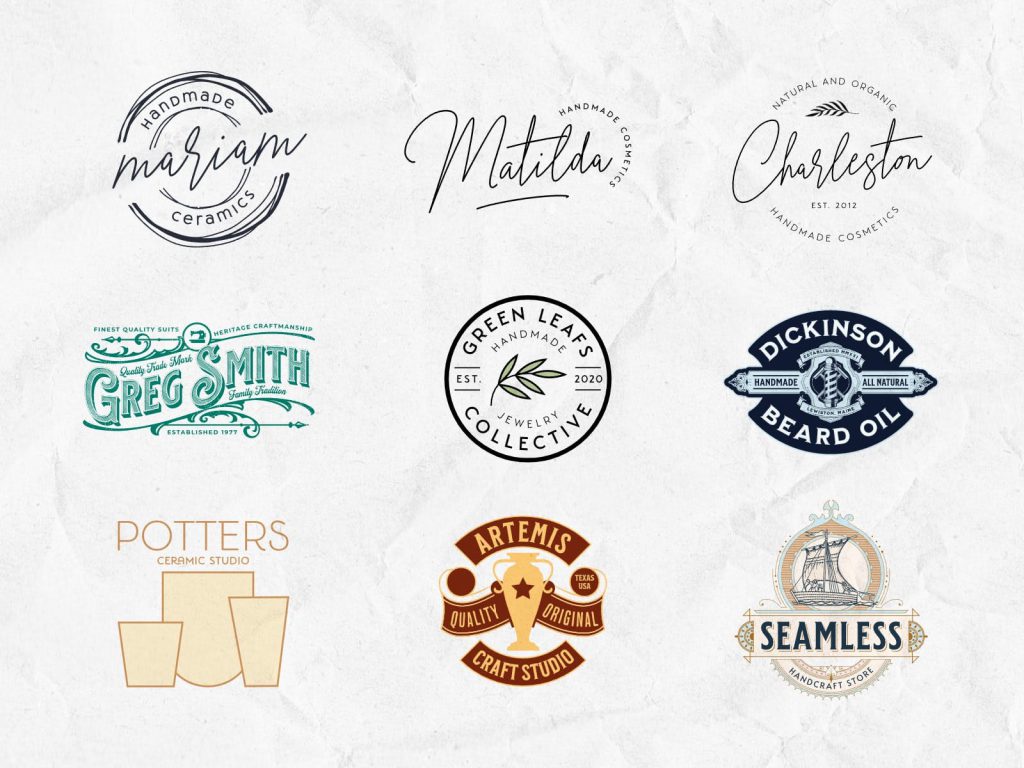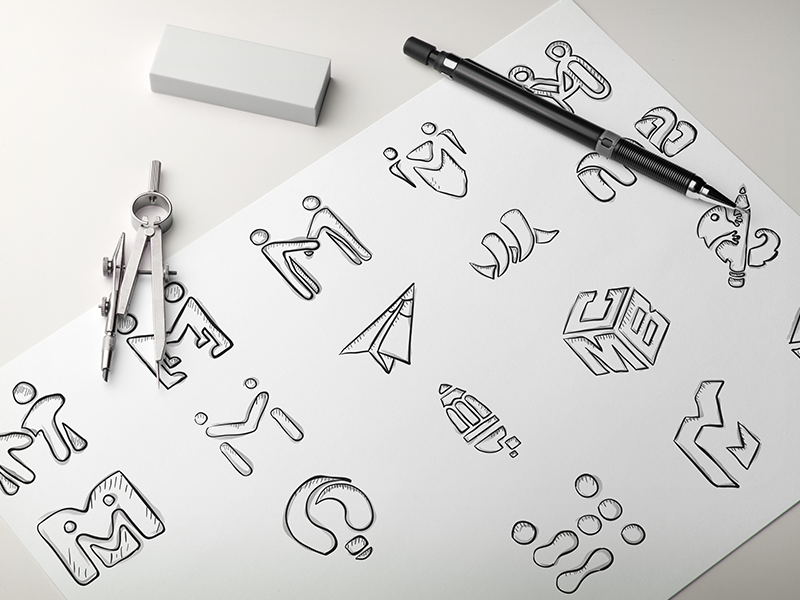A logo is a visual representation of a brand, often a company, organization, or product. It serves as a powerful tool that can communicate the brand’s identity, values, and mission to its target audience. A well-designed logo can help a brand stand out from its competitors, build brand recognition, and create a positive brand image.
However, designing a successful logo is no easy feat. It requires a deep understanding of the brand, its target audience, and the principles of design. Unfortunately, many designers and brand owners make common mistakes that can undermine the effectiveness of a logo.
This article provides a comprehensive overview of the most common mistakes made in logo design, along with practical tips to avoid them. It covers both the mistakes made by designers and those made by brand owners, offering valuable insights for both parties involved in the logo design process.

Common Mistakes Made by Designers
1. Lack of Strategic Planning
One of the biggest mistakes designers make is starting the design process without a clear understanding of the brand’s goals and objectives. This can lead to logos that are aesthetically pleasing but fail to communicate the brand’s message effectively.
To avoid this mistake, designers should take the time to conduct thorough research and develop a strategic plan for the logo design. This should include defining the target audience, identifying the brand’s key messages, and establishing the desired brand image.
2. Overly Complex Designs
Another common mistake is creating logos that are too complex or intricate. Such logos can be difficult to remember and reproduce, and they may not translate well across different media formats.
To ensure that the logo is simple and memorable, designers should focus on using clear shapes, lines, and colors. They should also avoid using too many elements or details in the design.
3. Lack of Versatility
A well-designed logo should be versatile and adaptable to various applications. It should look good in different sizes, colors, and formats, both online and in print.
To achieve this, designers should create a logo that is based on a strong concept and uses scalable elements. They should also consider how the logo will be used in different contexts and make sure it is flexible enough to accommodate these various uses.
4. Insufficient Research
Before starting the design process, it is crucial for designers to conduct thorough research on the brand, its competitors, and the industry it operates in. This research will help them understand the brand’s unique selling points and identify what sets it apart from its competitors.
By understanding the competitive landscape, designers can create logos that are unique and relevant to the brand’s target audience. They can also avoid creating logos that are too similar to those of competing brands.

5. Poor Color Choices
The colors used in a logo can have a significant impact on its overall impact and effectiveness. Choosing the wrong colors can make the logo look unprofessional, dated, or even offensive.
To select the right colors for the logo, designers should consider the brand’s target audience, industry, and desired brand image. They should also use color psychology to evoke specific emotions and associations.
6. Inappropriate Typography
The typography used in a logo can also play a crucial role in its overall effectiveness. Choosing the wrong font can make the logo look illegible, dated, or out of place.
To select the right typography for the logo, designers should consider the brand’s personality, target audience, and desired brand image. They should also choose a font that is easy to read and complements the other elements of the logo.
Related Article: Necessity Of Typography In Packaging Design
7. Lack of Originality
A logo should be unique and original, reflecting the brand’s individuality and standing out from the competition. Copying or imitating the logos of other brands can make the brand appear unoriginal and lacking in creativity.
To ensure that the logo is original, designers should brainstorm and explore different creative concepts. They should also avoid using templates or clip art in the design process.
8. Inconsistent Brand Identity
The logo should be consistent with the overall brand identity, including the brand’s name, tagline, website, marketing materials, and advertising. An inconsistent logo can create confusion and make the brand appear unprofessional.
To ensure brand consistency, designers should work closely with the brand owners to develop a comprehensive brand identity guide. This guide should define the brand’s visual identity, including its logo, colors, typography, and imagery.
9. Overreliance on Trends
While it is important to keep up with design trends, designers should avoid relying too heavily on them. Trendy logos can quickly become dated and irrelevant, requiring frequent redesigns.
Instead of following trends, designers should focus on creating timeless logos that are rooted in the brand’s core identity. They should also consider the long-term implications of the logo design and its ability to remain relevant over time.

Common Mistakes Made by Brand Owners
1. Rushing the Process
Designing a successful logo takes time, effort, and careful consideration. Brand owners who rush the process may end up with a logo that is poorly designed and fails to meet their expectations.
To avoid this mistake, brand owners should allocate sufficient time and resources to the logo design process. They should also be patient and allow the designer to explore different creative options and refine the design until it is perfect.
2. Micromanaging the Designer
While brand owners have the right to provide feedback and input on the logo design, it is important to trust the expertise of the designer and allow them to do their job. Micromanaging the design process can stifle creativity and lead to a less effective logo.
To ensure a collaborative and productive design process, brand owners should clearly communicate their goals and expectations to the designer. They should also provide feedback in a constructive and respectful manner, allowing the designer to incorporate their insights while maintaining creative control.
3. Ignoring the Importance of Research
Just like designers, brand owners should also conduct research on their target audience, competitors, and the industry to inform the logo design process. This research will help them make informed decisions about the logo’s style, colors, and overall concept.
By understanding the target audience and the competitive landscape, brand owners can ensure that the logo is relevant, appealing, and effective in communicating the brand’s message.

4. Unrealistic Expectations
It is important for brand owners to have realistic expectations about the logo design process. They should understand that creating a successful logo takes time, effort, and multiple iterations.
Expecting the designer to create a perfect logo on the first try is unrealistic and can lead to disappointment. Instead, brand owners should be open to exploring different options and providing feedback to help the designer refine the logo until it meets their needs.
5. Lack of Trust in the Designer
Brand owners should trust the expertise and experience of the designer they have hired. This trust is essential for a successful collaboration and a high-quality logo design.
By trusting the designer, brand owners can allow them to use their creativity and skills to create a logo that is both effective and visually appealing. They can also avoid micromanaging the process and allow the designer to deliver the best possible outcome.
6. Choosing the Cheapest Option
While it is important to be mindful of the budget, brand owners should not choose the cheapest option when it comes to logo design. A low-quality logo can damage the brand’s image and make it appear unprofessional.
Instead, brand owners should focus on finding a designer who can deliver a high-quality logo that meets their needs and budget. They should also be willing to invest in the design process to ensure that the final product is effective and represents the brand in the best possible way.
Is a Complex Logo Better?
Some people believe that a complex logo with many details is a sign of creativity and sophistication, and therefore makes the brand appear more professional. However, this is a misconception.
There are several reasons why a complex logo is not better:
- Difficult to Remember: Complex logos are difficult to remember and recall.
- Low Readability: In small sizes, the details of a complex logo become blurry and difficult to read.
- Lack of Flexibility: Using a complex logo in various media such as websites, social media, and print is difficult.
- Weak Brand Association: A complex logo may not effectively communicate the brand’s identity and message to the audience.

On the other hand, a simple logo has many advantages:
- Easy to Remember: Simple logos are easy to remember and recall.
- High Readability: Simple logos are readable in any size and medium.
- Flexible: Using a simple logo in various media such as websites, social media, and print is easy.
- Strong Brand Association: A simple logo can effectively communicate the brand’s identity and message to the audience.
In conclusion, the best logo is one that is:
- Simple and understandable.
- Relevant to the brand’s identity and message.
- Usable in various sizes and media.
- Memorable.
**Complexity in a logo is not an advantage, and it can actually harm the brand.



